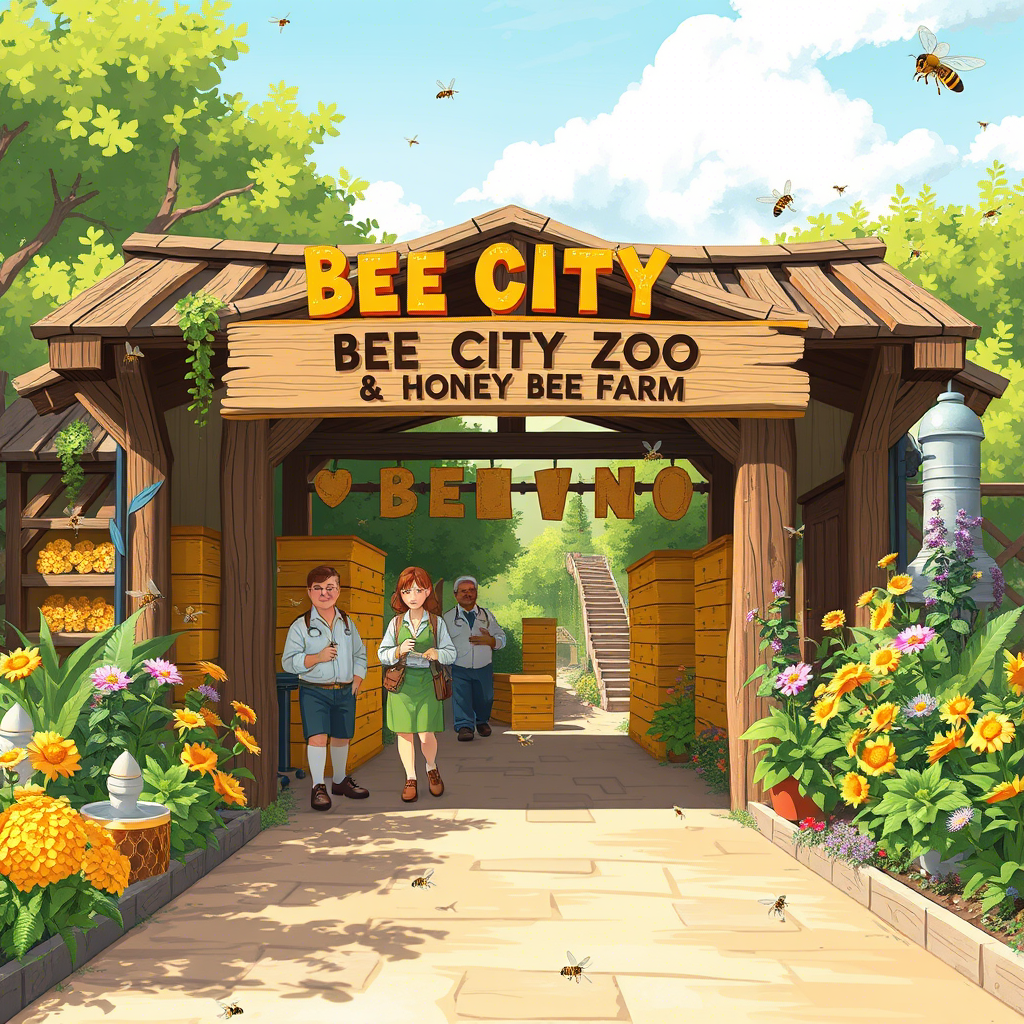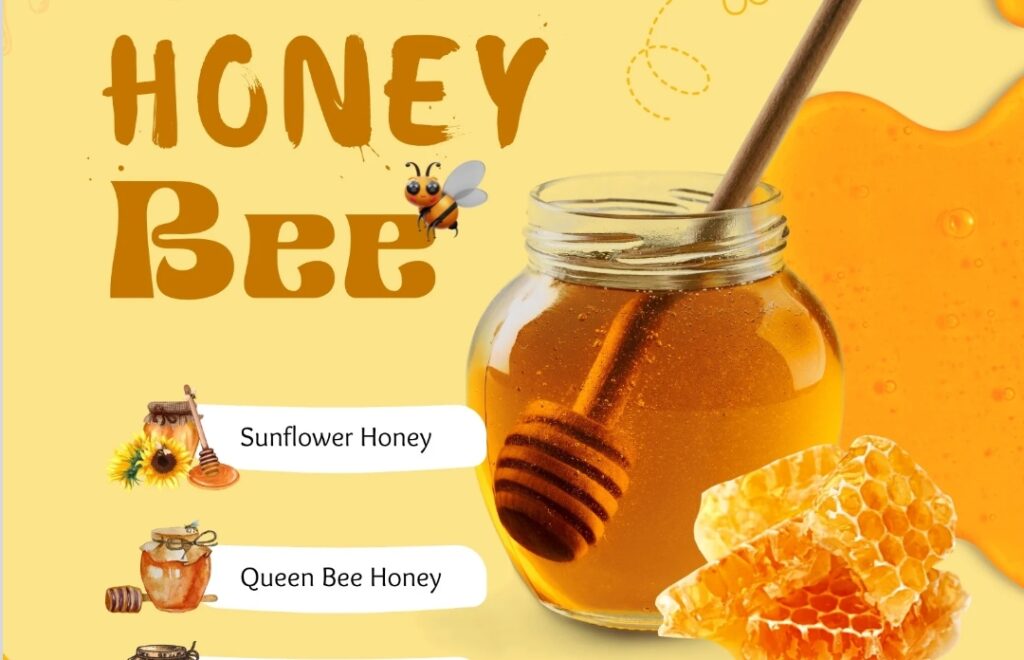Step-by-Step Guide to Creating Bee City Zoo & Honey Bee Farm
Effective Management of a Honey Bee Farm: Key Strategies for Success
Managing a honey bee farm requires a blend of scientific knowledge, hands-on skills, and a deep respect for these vital pollinators. Whether you’re a novice or an experienced beekeeper, adopting structured practices ensures healthy colonies, sustainable honey production, and environmental stewardship. Below are essential strategies to optimize your apiary management.

1. Hive Placement and Environment
Choose a location with abundant floral diversity, minimal pesticide exposure, and access to clean water. Bees thrive in areas with staggered blooming periods (spring to fall) to ensure consistent nectar and pollen sources. Position hives facing southeast for morning sun exposure, which stimulates early foraging. Elevate hives slightly to prevent moisture buildup and protect against predators like skunks or raccoons. Avoid windy or flood-prone areas, and maintain a buffer zone around hives to reduce human or animal disturbances.
2. Selecting the Right Bee Species
Different honey bee subspecies excel in varying climates and management styles:
- Italian Bees (Apis mellifera ligustica): Ideal for warm climates, known for gentle behavior and prolific honey production.
- Carniolan Bees (Apis mellifera carnica): Suited for cooler regions, these bees adapt well to fluctuating weather and resist diseases.
- Russian Bees: Valued for natural resistance to Varroa mites but may swarm more frequently.
Research local recommendations or consult regional beekeeping associations to match species with your environment.

3. Hive Management and Inspection
Regular hive inspections (every 7–10 days during active seasons) are critical. Look for:
- Queen Health: Ensure the queen is present and laying a solid brood pattern.
- Pest Infestations: Check for Varroa mites, hive beetles, or wax moths. Use integrated pest management (IPM) techniques like screened bottom boards or organic treatments (e.g., oxalic acid vapor).
- Hive Space: Add supers (additional hive boxes) during nectar flows to prevent overcrowding and swarming.
4. Seasonal Adjustments
- Spring: Stimulate brood rearing with light sugar syrup (1:1 ratio) if natural forage is scarce. Monitor for rapid colony growth.
- Summer: Ensure ventilation and shade to prevent overheating. Harvest surplus honey but leave enough for the bees.
- Fall: Prepare for winter by combining weak colonies, treating for mites, and supplementing with heavy syrup (2:1 ratio) to build winter stores.
- Winter: Insulate hives, reduce hive entrances, and avoid unnecessary openings to conserve warmth.
5. Sustainable Feeding Practices
Supplement natural forage with sugar syrup or pollen patties during dearth periods. Avoid honey from unknown sources to prevent disease spread. Provide clean water sources near hives (e.g., shallow dishes with stones to prevent drowning).
6. Harvesting Honey Ethically
Harvest only surplus honey, leaving 60–80 pounds per hive for winter. Use a bee-friendly smoker to calm colonies during extraction. Opt for centrifugal extractors to preserve comb structure, reducing bees’ rebuilding labor.
7. Record-Keeping and Monitoring
Maintain logs tracking hive health, honey yields, pest treatments, and queen performance. Apps like HiveTracks or manual journals help identify trends and preempt issues.
8. Promote Biodiversity and Sustainability
Plant native, pesticide-free flowers to support forage. Avoid chemical treatments harmful to bees; opt for organic miticides or essential oil blends. Participate in local conservation initiatives to protect pollinator habitats.
9. Continuous Education and Community Engagement
Join beekeeping associations, attend workshops, and share knowledge with neighbors to foster pollinator-friendly practices. Educate your community on bees’ ecological role to build support for your apiary.

- Introduction
- Step 1: Conduct Market Research
- 2.1 Identify Target Audience
- 2.2 Analyze Competitors
- 2.3 Study Industry Trends
- Step 2: Develop a Business Plan
- 3.1 Define Your Mission and Vision
- 3.2 Outline Revenue Streams
- 3.3 Create Financial Projections
- Step 3: Legal and Regulatory Compliance
- 4.1 Choose a Business Structure
- 4.2 Obtain Permits and Licenses
- 4.3 Secure Insurance
- Step 4: Secure a Location
- 5.1 Zoning and Accessibility
- 5.2 Design Layout for Zoo and Farm
- Step 5: Design Attractions and Infrastructure
- 6.1 Bee Zoo Features
- 6.2 Honey Bee Farm Setup
- 6.3 Interactive Experiences
- Step 6: Establish Operations
- 7.1 Hire and Train Staff
- 7.2 Source Bees and Equipment
- 7.3 Partner with Educators and Conservationists
- Step 7: Marketing and Branding
- 8.1 Build a Strong Brand Identity
- 8.2 Launch a Website and Social Media
- 8.3 Collaborate with Local Businesses
- Step 8: Financial Management
- 8.1 Budgeting and Cost Control
- 8.2 Funding Options
- 8.3 Pricing Strategy
- Step 9: Sustainability and Community Engagement
- 9.1 Eco-Friendly Practices
- 9.2 Educational Programs
- 9.3 Certifications and Partnerships
- Conclusion
1. Introduction
Bee City Zoo & Honey Bee Farm is a unique venture combining ecotourism, education, and sustainable agriculture. This guide provides a step-by-step roadmap to launch a business that celebrates honey bees, supports conservation, and engages visitors through immersive experiences. From market research to operations, learn how to create a buzzworthy destination.
2. Step 1: Conduct Market Research
2.1 Identify Target Audience
- Families, school groups, and eco-tourists.
- Beekeeping enthusiasts and sustainability advocates.
- Locals and tourists seeking interactive outdoor activities.
2.2 Analyze Competitors
- Visit local zoos, farms, and nature centers to identify gaps.
- Assess pricing, amenities, and educational offerings.
2.3 Study Industry Trends
- Growing demand for eco-friendly attractions.
- Rise of experiential tourism (e.g., workshops, hands-on activities).
3. Step 2: Develop a Business Plan
3.1 Define Mission and Vision
- Mission: Educate the public on bee conservation while producing sustainable honey.
- Vision: Become a regional hub for pollinator education and eco-tourism.
3.2 Outline Revenue Streams
- Entrance fees, guided tours, honey sales, workshops, and event hosting.
- Merchandise (beeswax candles, skincare) and café offerings.
3.3 Create Financial Projections
- Estimate startup costs: Land ($200k–$500k), construction ($100k–$300k), permits ($10k).
- Project annual revenue based on visitor capacity (e.g., 50,000 visitors at $15/ticket).
4. Step 3: Legal and Regulatory Compliance
4.1 Choose a Business Structure
- LLC or corporation to limit liability.
4.2 Obtain Permits and Licenses
- Agricultural permits for beekeeping.
- Zoo licenses and health department approvals.
4.3 Secure Insurance
- General liability, workers’ compensation, and product insurance.
5. Step 4: Secure a Location
5.1 Zoning and Accessibility
- Ensure the site is zoned for agriculture and commercial use.
- Proximity to highways or tourist hotspots improves visibility.
5.2 Design Layout for Zoo and Farm
- Allocate areas for beehives, interactive exhibits, gift shops, and parking.
- Include safety barriers and shaded rest areas.
6. Step 5: Design Attractions and Infrastructure
6.1 Bee Zoo Features
- Glass-enclosed observation hives, pollinator gardens, and educational kiosks.
- Live demonstrations (e.g., honey extraction).
6.2 Honey Bee Farm Setup
- Install Langstroth hives; plant nectar-rich flora.
- Build a processing facility for honey extraction and packaging.
6.3 Interactive Experiences
- Beekeeping classes, honey tastings, and “Adopt-a-Hive” programs.
7. Step 6: Establish Operations
7.1 Hire and Train Staff
- Beekeepers, educators, maintenance crew, and customer service reps.
- Train staff in safety protocols and storytelling techniques.
7.2 Source Bees and Equipment
- Partner with local apiaries for ethically sourced colonies.
- Purchase protective gear, smokers, and extraction tools.
7.3 Partner with Educators and Conservationists
- Collaborate with schools for field trips.
- Host guest lectures by entomologists.
8. Step 7: Marketing and Branding
8.1 Build a Strong Brand Identity
- Use bee-themed logos and taglines (“Save the Bees, Save the Planet”).
8.2 Launch a Website and Social Media
- Include booking options, SEO blogs, and virtual tours.
- Share behind-the-scenes content on Instagram and TikTok.
8.3 Collaborate with Local Businesses
- Cross-promote with hotels, restaurants, and travel agencies.
9. Step 8: Financial Management
9.1 Budgeting and Cost Control
- Track expenses using software like QuickBooks.
- Optimize energy use to reduce utility bills.
9.2 Funding Options
- Apply for agricultural grants or crowdfunding campaigns.
9.3 Pricing Strategy
- Offer tiered pricing: $25/adult, $15/child, group discounts.
10. Step 9: Sustainability and Community Engagement
10.1 Eco-Friendly Practices
- Solar-powered facilities, composting, and rainwater harvesting.
10.2 Educational Programs
- Free workshops for schools on pollinator importance.
10.3 Certifications and Partnerships
- Pursue USDA Organic certification or Bee-Friendly Farming accreditation.
11. Conclusion
Bee City Zoo & Honey Bee Farm merges education, conservation, and entrepreneurship. By following this guide, you’ll create a destination that delights visitors, supports ecosystems, and generates lasting impact. Start small, think sustainably, and let your business bloom!
